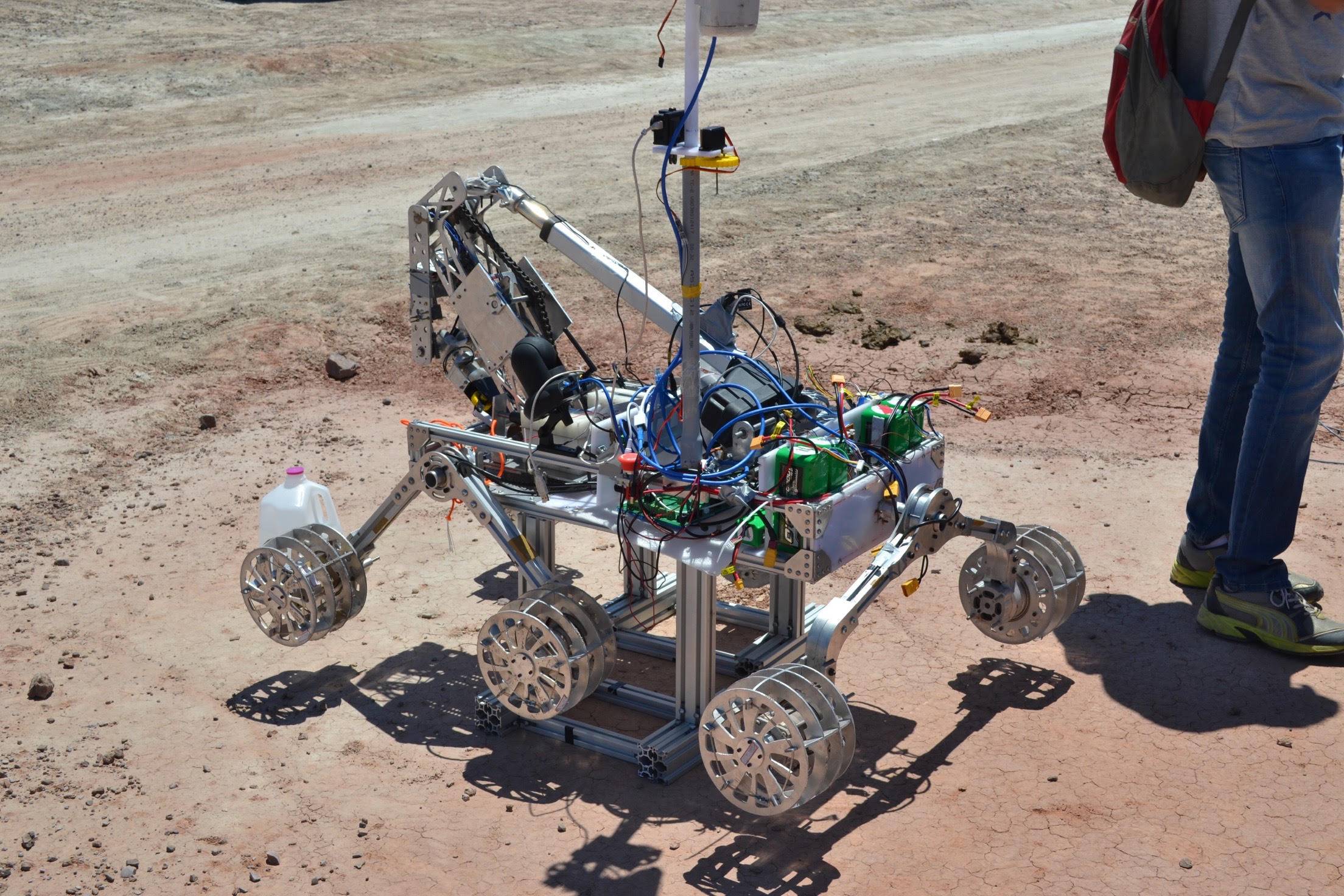Meet Aurora 2902, a robot rover built by IIT-Madras students to assist astronauts on Mars
Aurora 2902 is a state-of-the-art rover built for a competition conducted by the prestigious Mars Rover Society.

In Short
- Aurora cost Rs 3 lakh to make
- Its chassis can carry a Rs 50 kg load
- It possesses a robotic arm with a claw mechanism
Students of the Indian Institute of Technology (Madras) have built a robot rover to assist astronauts on Mars in their research. And it's operated using a video-game joystick.
The 50-kg rover, called Aurora 2902, is state-of-the-art. That's impressive, considering the fact that its manufacturing cost didn't exceed Rs 3 lakh.
"We made this rover for a competition called as the University Rover Challenge, conducted by the prestigious Mars Rover Society", said Vivek Vysyaraju, who leads the IIT-M team that built Aurora.
EXPLORERS
Team 'Anveshak' (Sanskrit for explorer) competed with 81 other teams, and scored much better due to the simplicity of their design.
"Though the cost ceiling for the competition was 10 lakh rupees, we finished this working rover under 3 lakh as that was all we could acquire", Vysyaraju explained.
His team used a Raspberry Pi CPU worth Rs 3,000 instead of a motherboard, which would have set them back Rs 15,000.
An added advantage: The CPU freed up space for the aluminium chassis, a space-dust resistant modular design with easily-replaceable parts.

MADE FROM SCRATCH
Every part of Aurora - save the motors and lithium polymer batteries - was designed and made from scratch.
To minimize the number of moving parts, futuristic rocky bogey arms were used to connect its six wheels to help steer it.
The rover also possesses a robotic arm with a claw mechanism, which can carry objects weighing upto 5 kg.
"Aurora runs on 4 lithium polymer batteries each holding 10,000 mAh, of which three power 6 wheel motors and one (is) dedicated for the hydraulic arm. She can even carry a load (of) upto 50 kg on her chassis - as per requirement - and we have tweaked her cruise speed between 5 to 10 km/hr", said Achu Shankar, who handles the software input system.
His collaborator Ganga Meghanath said the team focused on making Aurora easy to operate.
"The competition had priorities like taking a soil sample...to test it. So we relied on modules which are easy to assemble, but we made sure that the handling of Aurora should be much easier...that's why we made the controls look as easy as possible. For instance, we are using a video game joystick for controls", he said.
Team Anveshak's ultimate goal is to assist ISRO and other space agencies in their endeavour to send astronauts to Mars, and provide equipment that will make their life easier on the Red Planet's harsh terrain.
ALSO READ
FROM THE MAGAZINE | ISRO: Space Ace
Against all odds, autorickshaw driver's daughter gets admission in IIT Delhi
ALSO WATCH